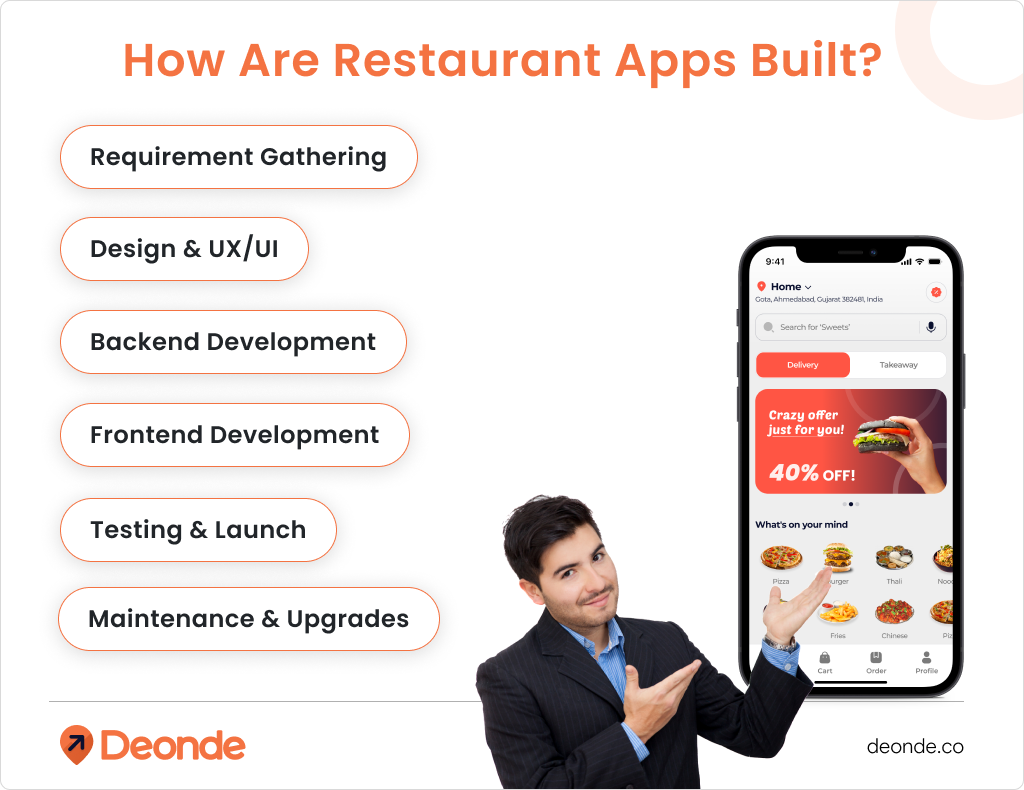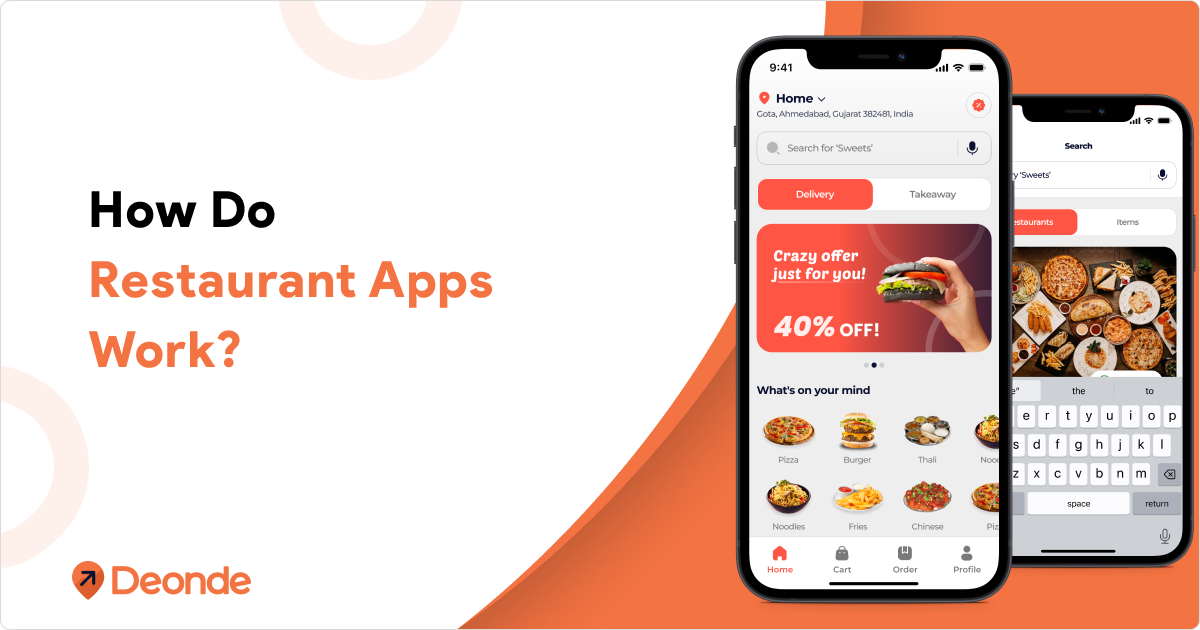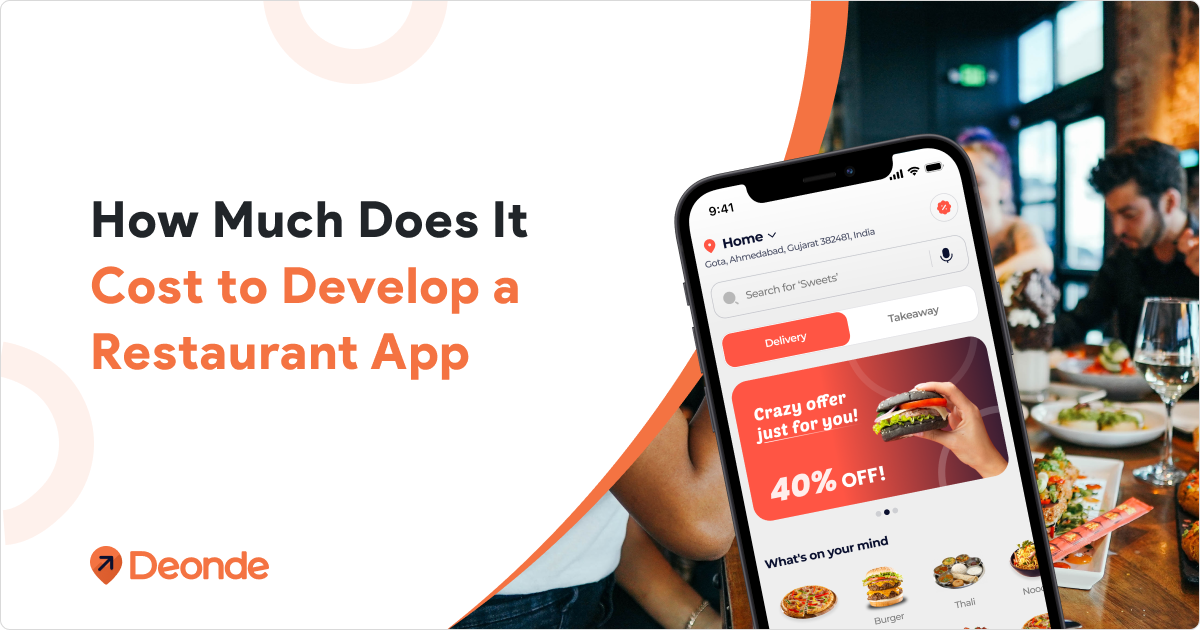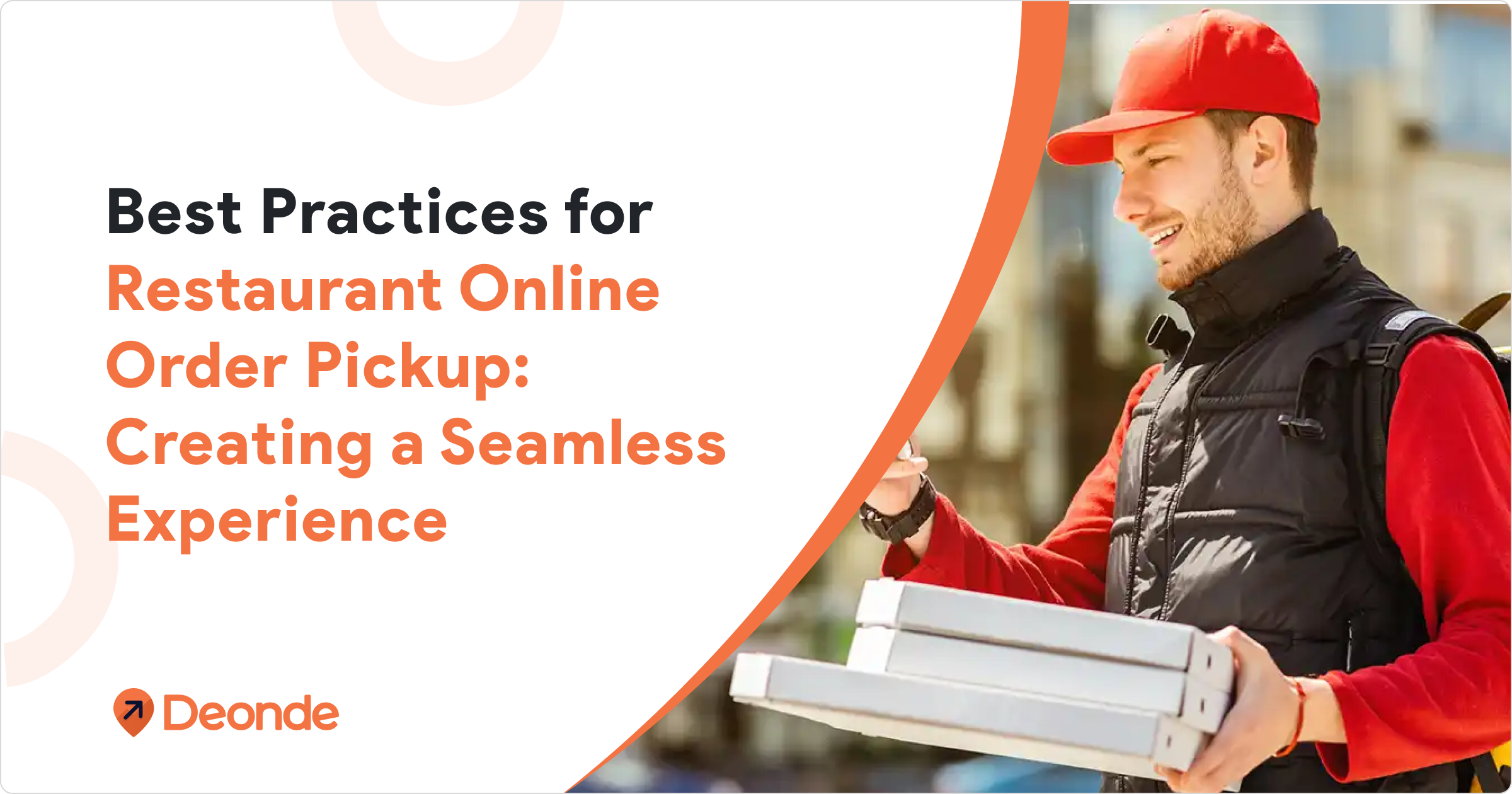Imagine it’s a busy Saturday night, and you’re craving your favorite pasta from the cozy Italian restaurant down the street. Rather than calling or waiting in line, you open the restaurant’s mobile app, customize your order, and pay within seconds, and track the delivery driver right to your door.
This seamless experience is powered by restaurant apps, and it’s revolutionizing how we dine. But how do restaurant apps work? Whether you’re a customer curious about the tech or a restaurant owner looking to boost sales, understanding these apps is key.
It’s no secret that to thrive in this competitive industry, restaurants need more than just great food and service; they need a robust digital presence. If you’ve ever wondered about the magic that happens behind the scenes when you tap “order” on your phone or how these apps are revolutionizing the dining experience, you’re in the right place.
This blog will walk you through everything you need to know: what restaurant apps are, how they benefit both customers and restaurant owners, and how they’re developed to drive loyalty and sales. Whether you’re a restaurateur exploring options or a curious diner, this guide will give you a practical overview.
We’ll also lift the hood and explore the systems that power your favorite food ordering apps for restaurants. You’ll walk away with a deeper appreciation for how they function—and how they can grow your business.
What Are Restaurant Apps?
Restaurant apps are mobile applications that improve customer experience and business efficiencies. Users can view menus, order food, book tables, or redeem loyalty points all from their smartphones on restaurant apps. Ultimately, restaurant apps serve as a combination of restaurant and customer communication platform to help everyone navigate, add convenience, and be more efficient.
There are two types of restaurant apps: third-party platforms such as Uber Eats or DoorDash that aggregate different restaurants together and branded apps such as those for chain restaurants like McDonald’s or Starbucks that are specific to one restaurant with their own brand and offerings. Both restaurant apps have done a good job of making their food ordering process seamless. Still, branded apps provide the business with better control over their customer experience and data, which is a significant advantage for the business.
How Do They Work for Customers?
For us, the customers, the magic of a restaurant app lies in its simplicity and efficiency. The journey typically begins with downloading the app from an app store. Once installed, you’re usually prompted to create an account or log in. From there, it’s a straightforward process:
- Browse Menus: Visually appealing menus, often with high-quality photos, allow you to explore dishes, read descriptions, and check prices.
- Customize Orders: Want no onions on your burger or extra cheese on your pizza? Most apps offer robust customization options.
- Place Order & Pay: With a few taps, your chosen items are added to a cart. Payment is usually integrated, supporting various methods like credit/debit cards, digital wallets, or even cash on delivery.
- Track Delivery: The real-time tracking feature is a game-changer, letting you know exactly when your food will arrive.
Beyond the basic ordering process, many apps enhance the customer experience with features like push notifications for order updates or special offers, loyalty programs that reward repeat business, and saved preferences for quick reordering of your favorite meals.
How Do They Work for Restaurants?
Although the process is smooth for the customer, the backend side of restaurants operates in a different world where they use technology to the finest. When a customer places an order in the app, it goes to the restaurant’s order management system. If available, it usually connects to the Kitchen Display System (KDS). The KDS shows staff order entries. It also makes prep easier and reduces order errors.
This is the beauty of a restaurant ordering and delivery app: customer data analytics. Restaurants can see what sells best and when orders peak. They can also track customer trends in their category. This leads to decisions based on facts and evidence. It helps with menu optimization, workforce needs, and marketing campaigns. Many apps link restaurants to their back-office features, existing POS systems, and most delivery services. These connections ensure orders reach delivery without any issues. Here, you will gain a deep understanding of how restaurant apps work. This will help improve operations and boost efficiency.
Key Features of Restaurant Apps

To truly deliver on their promise, restaurant apps are packed with a suite of essential features. Beyond the core functionalities of menu browsing and ordering, you’ll often find
- Online Ordering and Delivery Management: The backbone of any food app, allowing customers to place orders for delivery or pickup.
- Table Reservations: For dine-in experiences, enabling customers to book tables in advance.
- Loyalty Programs: Rewarding frequent customers with points, discounts, or exclusive offers.
- Push Notifications: Keeping customers updated on order status, promotions, and new menu items.
- Customization Options: Allowing customers to tailor their orders to their preferences.
- Secure Payment Gateways: Offering various safe and convenient payment methods.
- GPS Tracking: For real-time delivery tracking.
- Customer Support Integration: Providing a channel for queries and feedback.
- User Reviews and Ratings: Building trust and providing valuable feedback for restaurants.
- Menu Management System: Allowing restaurants to easily update their menus, prices, and availability.
These restaurant app features are what truly elevate the user experience and provide significant benefits of restaurant apps for businesses.
How Are Restaurant Apps Built?

Restaurant mobile app development typically involves several stages:
1. Requirement Gathering: Define goals, users, and key restaurant app features.
2. Design & UX/UI: Create a layout that aligns with your brand and user expectations.
3. Backend Development: Set up databases, APIs, order management logic, and payment gateways.
4. Frontend Development: Build mobile interfaces for Android and iOS.
5. Testing & Launch: Ensure functionality, security, and performance.
6. Maintenance & Upgrades: Roll out new features based on feedback and usage analytics.
Tech stacks often include Flutter or React Native for the front end, Node.js or PHP for the backend, Firebase for push notifications, and integrations with restaurant POS systems.
For restaurateurs who want to go digital fast without building from scratch, platforms like Deonde offer white-label mobile ordering systems for restaurants, complete with customization, support, and scalability.
How to Choose the Right Tech Stack for Your Food Delivery App?
Conclusion
Restaurant apps have redefined the food service landscape. For customers, they bring ease, speed, and personalized experiences. For businesses, they offer automation, insights, and higher margins. It’s not just about convenience—restaurant apps work to drive growth.
If you’re a restaurant owner exploring digital expansion, Deonde’s white-label solution can get your branded app up and running without the heavy investment. With all the tools and features mentioned above, you’ll be equipped to compete with the best restaurant apps on the market.





